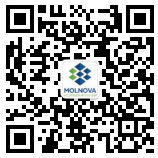ATM/ATR
Both ATM and ATR can be activated by DNA damage, although it is not known exactly how these two kinases sense such damage. However, ATM responds primarily to doublestrand breaks (DSBs) induced by IR, while ATR also reacts to UV or stalled replication forks.Nevertheless,there is no clean-cut differentiation between the signals for the two kinases, as ATM also functions in some UV responses, mediating the repair of UV-induced DNA damage and the phosphorylation of STAT3. ATM is also involved in UVA-induced signaling and apoptosis, whereas ATR functions in UVC-induced signaling and apoptosis. It was previously thought that ATM and ATR might be activated both through interactions with DNA and with members of the repair complexes.ATM can bind directly to DNA and pre-treatment of DNA±cellulose matrix with IR or restriction enzymes stimulates ATM binding, suggesting that ATM binds to DNA ends.
ATR also binds to DNA and with higher affinity to UV-damaged than to undamaged DNA. In addition, damaged DNA stimulates the kinase activity of ATR to a significantly higher level than does undamaged DNA. ATM and ATR also interact with many proteins that co-localize at the site of DNA damage to form `foci' .ATM/ATR can usually be found in these areas several minutes after the damage occurs, supporting a role for these two kinases in the damage sensing process. The other proteins involved include structural proteins of chromatin, proteins that function in chromosomal repair and maintenance and, on some occasions, transcription factors, for exmaple BRCA-1, H2AX, MDC1, WRN, 53BP1 and E2F1.
References
1.Yang J, et al. Carcinogenesis. 2003 Oct;24(10):1571-80.
ATR also binds to DNA and with higher affinity to UV-damaged than to undamaged DNA. In addition, damaged DNA stimulates the kinase activity of ATR to a significantly higher level than does undamaged DNA. ATM and ATR also interact with many proteins that co-localize at the site of DNA damage to form `foci' .ATM/ATR can usually be found in these areas several minutes after the damage occurs, supporting a role for these two kinases in the damage sensing process. The other proteins involved include structural proteins of chromatin, proteins that function in chromosomal repair and maintenance and, on some occasions, transcription factors, for exmaple BRCA-1, H2AX, MDC1, WRN, 53BP1 and E2F1.
References
1.Yang J, et al. Carcinogenesis. 2003 Oct;24(10):1571-80.
Cell Cycle/DNA Damage
ABC(12)
AChR(104)
Antifolate(12)
ATM/ATR(26)
Aurora Kinase(51)
CLK(15)
c-Myc(22)
DHFR(16)
DNA Alkylator(34)
DNA gyrase(11)
DNA Repair Protein(21)
DNA/RNA Synthesis(187)
DNA-PK(15)
GPR(97)
HDAC(152)
Hec1/Nek2(9)
Integrin(77)
LIM Kinase (LIMK)(7)
Mps1/TTK(2)
Nucleoside Antimetabolite/Analog(48)
Other Targets(4)
PAK(13)
PARP(67)
PLK(26)
Potassium Channel(146)
RAD51(1)
Rho(16)
ROCK(42)
Telomerase(12)
Topoisomerase(89)
Wee1(7)



 021-51111890
021-51111890 购物车()
购物车()
 sales@molnova.cn
sales@molnova.cn






